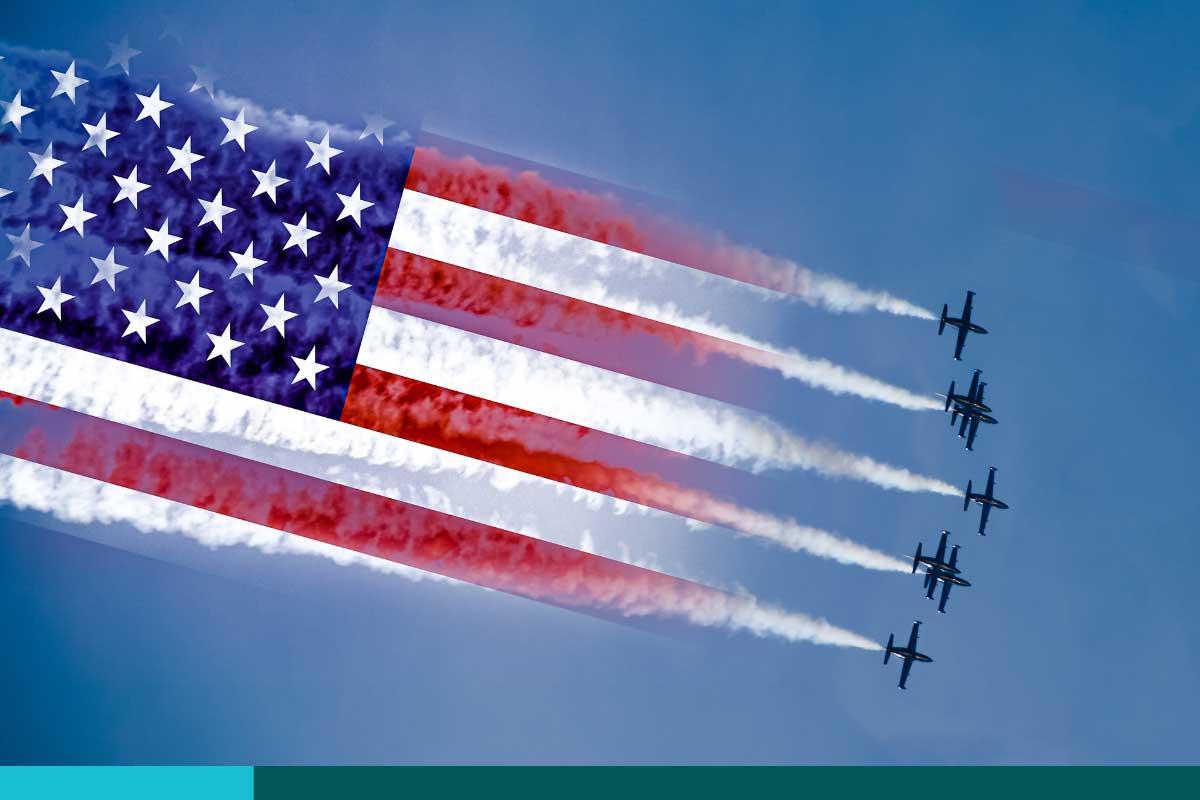Interoperability and the Air Force

“We must find fresh ways to connect forces, allies, and partners that provide an effective response to the challenge of a highly contested environment not seen in the last 20 years. Given the challenges we face today and in the future, we simply have no choice but to become more interoperable,” said General CQ Brown JR., U.S. Air Force Chief.
“Even with the best capabilities and the best minds, we can’t do this alone. We must integrate because we care clearly stronger together,” said General John W. Raymond, U.S. Space Force Chief of Space Operations.
A top priority for the Department of the Air Force (AF) (which includes both the Air Force and Space Force) is enhancing its access, partnership and integration capabilities across IT systems, but also other parts of government. The department’s vision for how it operates and fights relies heavily on interoperability. We see the role of interoperability reflected across the Department of Defense (DoD) and its diverse mission areas (for example, see our blog on interoperability and Defense Health). With respect to the Department of the Air Force, its Chief Information Officer (CIO), Lauren Knausenberger, recently noted “I have seen us come together through that interoperability in ways that I’ve never seen before.” The CIO was referring to the progress the military service has undertaken within the agency and across other DoD departments, to achieve notable results. This blog touches on these important accomplishments, and current and future activities. More importantly, I will share areas that industry could assist the Air and Space Forces (AF/SF) in achieving interoperability.
AF Interoperability Successes
The AF is currently focused on transitioning the entire department to the use of the single cloud-based communication solution Office 365 (O365), which every department across the DoD is now utilizing. Another focus area is what’s known as the “Big-6,” which is an enterprise data architecture consisting of six major data platforms that would enable the AF to “get the right data to anyone, anywhere, anytime.” This data consolidation effort would complement the JADC2 data architecture, the centerpiece of DoD’s joint warfare strategy.
The Integrated Warfighting Network (IWN) is another achievement for the AF/SF that combined enterprise IT and warfighting IT to help troops make better-informed command and control decisions be it in the office or under combat deployment operations. Also of note is the Unified Platform, cited as the DevSecOps component that united cyber forces across the DoD to develop defenses and offensive operations as a unit against cyber threats. This partnership initiative represented a major shift in how the services work together to respond to millions of malicious attempts and schemes to attack the DoD daily. The creation of the MyPCS mobile application by the AF is another success that has made a difference to service members and their families. This solution serves as a simplified one-stop shop for members to process their Permanent Change of Station (PCS) involving their relocation assignments. The application automates processes like flight check-in, tax and insurance claim filing, one-click signatures, and other features that make stressful life-changing events more manageable for approximately 400K members and their families annually.
Challenges and Opportunities
Despite the progress above, the AF/SF see many areas that still stand in the way of achieving and sustaining interoperability and represent tasks and challenges. For instance, there are still stove-piped systems no longer capable of sharing data and must be sunset. Replacing them requires timely efforts and a dedicated workforce to keep pace with the rapid changes in technology. Additional uncertainty of whether funding is available from Congress is also a concern.
To continue developing lethality at the edge, the AF/SF still needs to obtain more cloud solutions it currently sees as separate networks, particularly with satellites and aerial networks where encrypted data is moved seamlessly across boundaries, terrestrial and citizen groups. The Air Force recognizes the need to have an agile and capable workforce and calls for the collaboration of its workforce to communicate their requirements of the next software, technology, or the next operating model, not only to make their work more effective but also to ensure they can address changes to the security environment and force posture.
Then there is the zero-trust framework that AF/SF sees as essential in simplifying its warfighting environment through secured identity management, artificial intelligence (AI) and machine learning (ML), and integrated AF systems. As part of the strategy to sustain future advantage, the Air Force plans to use aggregate data to assist decision-makers and a joint force coalition with timely and targeted information. These strategies would require robust internet operations platforms to support seamless and reliable data exchange.
Finally, the AF/SF recognizes the importance of user experience for effective warfighting. Current and future tasks would include providing reliable tools and data warfighters require, adding IT-driven measures that enhance warfighters’ capabilities, and tracking the performance of their tools to ensure an integrated and positive experience for users on or off the battlefield.
How Industry Can Help
So much of what the AF/SF wants to accomplish relies on integration, interoperability and collaboration. Leaders like Secretary Frank Kendall, Gen. CQ Brown Jr., Gen. John W. Raymond, Dr. Lisa Costa, and Lauren Knausenberger frequently emphasize the importance of partnership with industry to help them accomplish their missions. Given the list of current and future tasks, where can industry focus to help the AF/SF achieve interoperability?
Industry would want to explore integrating the AF warfighting network with the other DoD services to support JADC2, the DoD joint warfighting framework. It should further focus on assisting the agencies with not only replacing outdated hardware, but also providing software that integrates well with existing systems. Separate networks like aerial networks need to be integrated with the AF/SF warfighting network using the DoD reference architecture.
The recurring cybersecurity threats suggest industry needs to offer novel and strong solutions to keep the AF’s network secured while enabling ease of access to its warfighters at the right classification level. Offering solid AI support would also be a welcomed part of the AF’s identity and risk management framework. Industry may also examine what current approach is in place to support zero trust across all DoD pillars and propose solutions that are simplified and help the AF/SF make quick and informed decisions. Stable but high-speed internet operations platforms, for example are key to offering a reliable data exchange to the AF/SF.
Like the Defense Health Agency (DHA), the AF/SF place high importance on the user experience (UX). Will the users be able to accomplish their tasks easily and intuitively at the front end either across the network or from a mobile device? A user-friendly, responsive interface, chat support, and search functions are helpful features to the end-user. Focus on a positive UX throughout the discussion of your solution and that will resonate well with those listening in the AF/SF and may earn you a foot in the door.
To get more TD SYNNEX Public Sector Market Insight content, please visit our Market Intelligence microsite.
About the Author: Toan Le is a senior analyst on the TD SYNNEX Public Sector Market Insights team covering the Department of Defense and intelligence community.

























